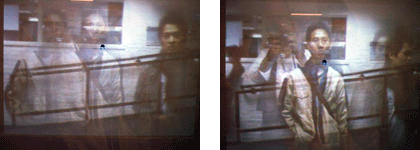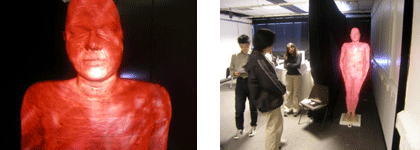

 subscribe
subscribeA small team of developers in California has launched a cutting-edge Firefox-based Web browser dubbed Flock, which integrates next-generation Web technologies such as RSS content feeds, blogs and bookmark and photo sharing.
The browser's new features are based on new Web technologies,that has come to be known as Web 2.0.
The team of developers was spearheaded by Bart Decrem, who is well known in the open-source community due to his involvement in the Mozilla Foundation.
The traditional Web browser bookmarks menu has been replaced in favour of close integration with del.icio.us, an online service that allows bookmarks to be stored and shared with other users. Flock includes a built-in RSS reader, this allows a user to read all of their blogs in one place, without separately navigating to each one, Flock is the first to integrate this into a Web browser, it also facilitates blogging by the user with a "Create a blog post" button located in the main navigation bar that integrates on a drag-and-drop level with Flickr. Flock intergrates with Wordpress, Six Apart and Blogger.
I didn't have much idea what 'Sonic Art - Waveswarms' was going to be about but I went hoping to find out more about what others are exploring in this area. I'm still not that clear except that all the people talking were all concerned in some way with exploring sound and interaction.
A number of speakers referred to the way in which sound and hearing have been undervalued compared to words and images. Aaron Siegel used the idea of aural parallax to compare the experience of some interactive sound installations to that of moving around a sculpture like that of Serra, for example. He used this to illustrate an understanding of 'public space'. The important aspect being that the individual can be part of a shared experience while retaining a separate subjective sense of themselves. This can come, for example, from moving around a space and experiencing changes in our sonic field as a result.
From Net Art News, Rhizome June 10, 2005
Kurating By Numbers
On the 4th of June, Tate Modern hosted the CURATING, IMMATERIALITY, SYSTEMS symposium to kick off its epochal Open Systems survey show of the conceptual and informatic art that swept the 1960s-70s. The conference acted as the first docking bay for UK-based programmer Grzesiek Sedek and curator Joasia Krysa's open source curating software KURATOR. Drawing on affinity between code art and curatorial praxis, the software tries to redevelop curating as a generative experiment in social relations, within and against an art world that is only beginning to bypass the genteel stultification of curator as the golden alibi of art markets and aesthete-at-large. KURATOR posits "software curating" as a way to distribute curatorial process over networks of people, including artists and others, and finally outwards from the special domain of an individual. It further combats the reification of taste by partially automating many of the traditional metiers that distinguish the curato! r - selectivity being one.
Sneakware as Parasite
Sneakware uses deceptive means to sneak onto your computer. In theory, the user is still granting permission for the software to be installed, but the user is often unaware he is granting permission. This is because said permission is buried deep within the terms and conditions of an application that contains the sneakware—terms and conditions the software developer hopes you don’t take the time to review.
Another sneaky thing about sneakware is that the vendor often tries to fool naïve users into thinking they are at risk if they don’t install it. For example, as you’re Web surfing, you may see a pop-up dialog box labeled “Security Warning†suddenly appear on-screen. The “Security Warning†label is intended to convince you that you must install the app it suggests to protect your computer from the very type of software that will be installed if you click Yes to approve the installation. Recently, we’ve come across sneakware so deceptive in this regard that if you decline to install the software, a second pop-up dialog box states, “You must click Yes to install,†or “Download ABORTED. You must click YES.†At this point, many people are no doubt scared, fooled, or confused into installing the sneakware.
A conversation with Dave Green of NTK at the EVNT workshop earlier this week at SPACE Media Lab started like this....
Me : So you have this conference coming up in July. Would it be appropriate for artists to come along to talk to programmers?
Dave: [---giggles-->
[---giggles more-->
The giggling kept going throughout our conversation. Perhaps it was because I kept making statements and asking questions that generalised programmers into a herd- comments about how they think, behave, communicate. It may also be that I falsely assumed that everyone has the same question as me perpetually ringing in their heads.
- Why don't artists in London work more closely with the programming community?-
Allan Au's interactive installation caused mass disturbance and traffic jams in the corridors of the college. Moving image and animation BA students went beserk in front of the distorting images, amazed at the wonders of technology. Our special section editor caught Allan smiling in the corner, and thinking already about the next version of the Mirror Life Cinema.

Three dimensional projection surface as a body. A senso tracks the distance when vistors approach the sculpture, and accelerates or decreses the speed of the movie.
